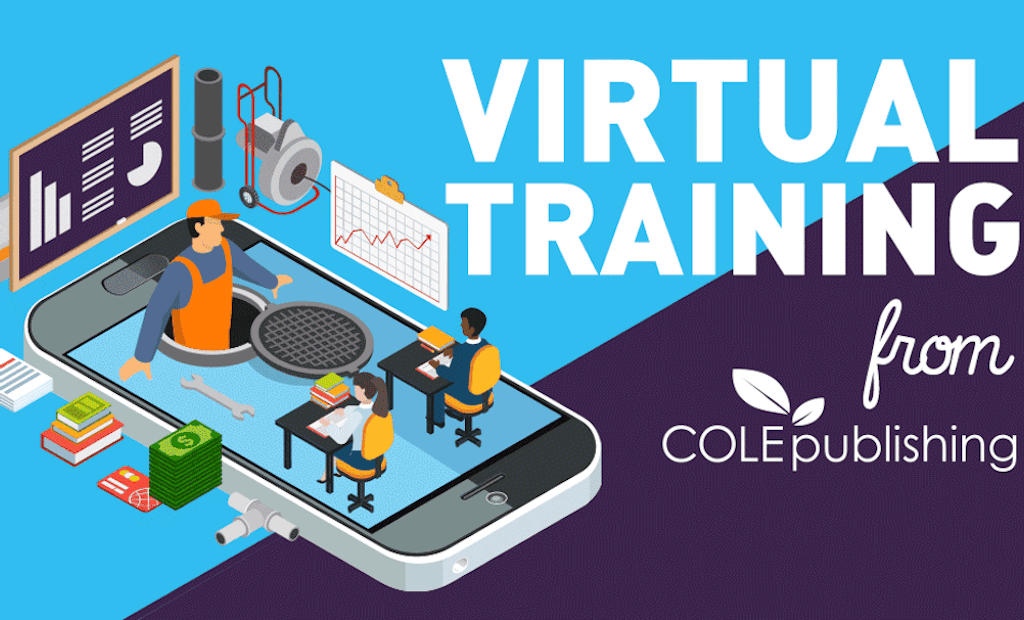Interested in Education/Training?
Get Education/Training articles, news and videos right in your inbox! Sign up now.
Education/Training + Get AlertsSwitching your pumping business from a time-and-materials rate structure to flat-rate pricing is a big jump that will ultimately affect your bottom line. This change can increase profit, but it’s up to you as the leaders and managers to ensure it does. Making the adjustment is not a decision to be taken lightly, and it won’t result in immediate success. The same ingredients that go into successful business practices in any area are needed for making the shift to flat-rate pricing: hard work and determination.
Anja Smith — a regular contributor to Pumper, Plumber and Cleaner magazines and owner of All Clear Plumbing in South Carolina — shares her expertise in a virtual training session on how to make flat-rate pricing a profitable venture.
“It’s not going to work if your real issue is leadership, discipline, motivation, organization or cultural issues,” Smith says. “The good news is that flat-rate can be a strong catalyst for change in your company.”
Flat-rate pricing may be the opportunity to address other underlying issues by providing a clear framework for operational expectations. However, addressing that amount of change in any company requires proper preparation. “The answer to profitability from flat-rate comes through good planning, good training and consistent management,” Smith says. “Without those, flat-rate is going to fall flat on its face.”
When it comes to planning, do your homework. The price book you choose will become the template for your new pricing structure. Make sure you’re researching multiple companies, asking questions and choosing the one that best supports your company. After choosing a price book provider, the second part of planning is taking a look into updating your hourly rate. Even though you’re no longer billing time and materials, you still need to dig into the math and make sure the flat-rate pricing is covering everything and keeping you profitable. The final planning step is implementing the plan.
Getting your team on board
Implementing the plan starts with engaging the rest of your company’s team. “This is most likely going to be a cultural bomb going off in your company,” she says. “This is not a small shift.” Develop a training plan to involve your team and help them make the transition.
Training is the bulk of the implementation work. It should begin by discussing the changes with your team before they happen and invite questions through a series of meetings. They will need time to wrap their heads around the concept and adjust. Use the meeting to discuss how the new pricing structure will benefit the customer, the business and most important, the employees.
The next thing you want to look at and discuss with your employees is appointment workflow. “If you don’t take advantage of the fact that you can provide upfront predictable pricing and that you can provide comprehensive options with flat-rate pricing, then you’re really negating the huge benefit of flat-rate pricing from a customer service standpoint,” Smith says.
Proper workflow of a flat-rate appointment is critical. Start by appropriately greeting the customer by name and introducing yourself. Next, look at the problem they’re presenting, understand it and diagnose the issue. Once that is established, the next task is putting together and presenting options from the price book.
Letting the customer choose from a series of options gives them control of the situation and allows them to proceed as they wish. “They have probably called you for something they’re not thrilled about doing. They’re probably in a bad mood when you arrive and handing the control over to them is a huge psychological boost,” Smith says.
Another advantage of getting them to choose and agree to a price before doing the work is that you are going to have fewer concerns about people arguing or complaining about the price after the work is done.
This also provides an opportunity to let the customers choose what they would like to have go into their home in terms of plumbing accessories. “You’re giving them permission to upgrade their appointment or upgrade their fixture, which is something they may be inclined to do,” she says. “There’s a huge opportunity there to increase your average ticket.”
Familiarizing the system
The next step in training is hands-on practice. Real-world situational training gives your technicians a chance to ask questions, acquaint themselves with the system and fill out sample invoices before entering the field. Implementing a routine training program will help develop confidence and familiarity in the system for new and veteran employees.
Smith explains that the last part of implementing flat-rate pricing is to celebrate the transition with your team. “The launch day for your new price book should be a huge day in your company.” It’s important to get people excited about the change, but more important, you need to send a message that time and materials are a thing of the past for your company. “By making a celebration out of launch day, you’re really drawing that line in the sand,” she says. “You’re sending a very strong signal to your team that you expect this to be the new wave of the future.”
Ongoing and consistent management is the key to maintaining the system. Be a leader and ensure that the transition is something everyone at the company is comfortable with. This fundamental change is going to impact the employees, and there will be days that some of them feel like they are failing.
“What frustrates employees the most is a lack of leadership and a feeling of failure,” Smith says. “It’s your job to help them through that struggle and to make sure they know that you have their back.”
Always be willing to have conversations with your employees and discuss their frustrations. Supporting your team is the last piece of using this opportunity to its fullest potential.
Watch the full-length training video and others like it at www.pumper.com/training.






